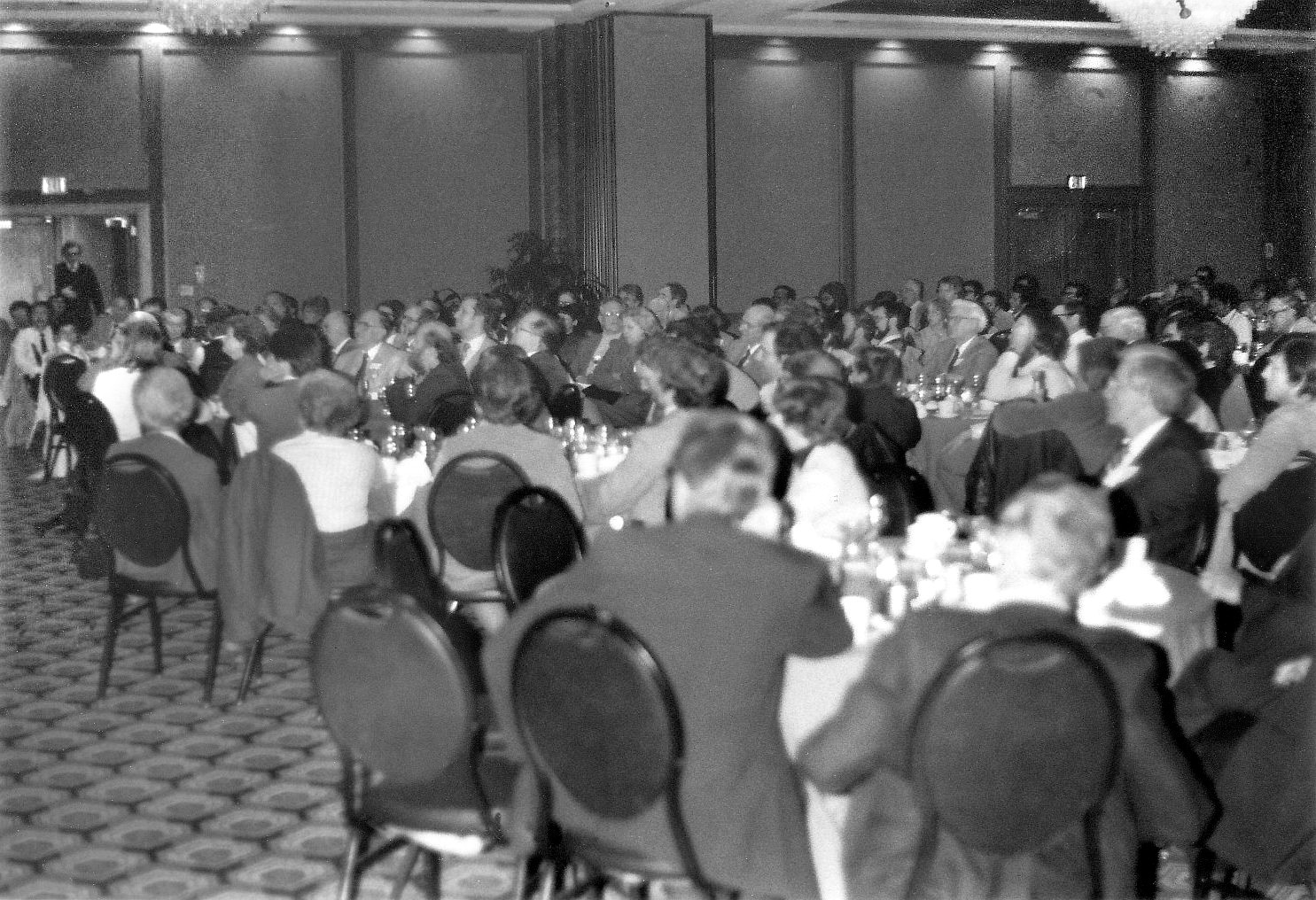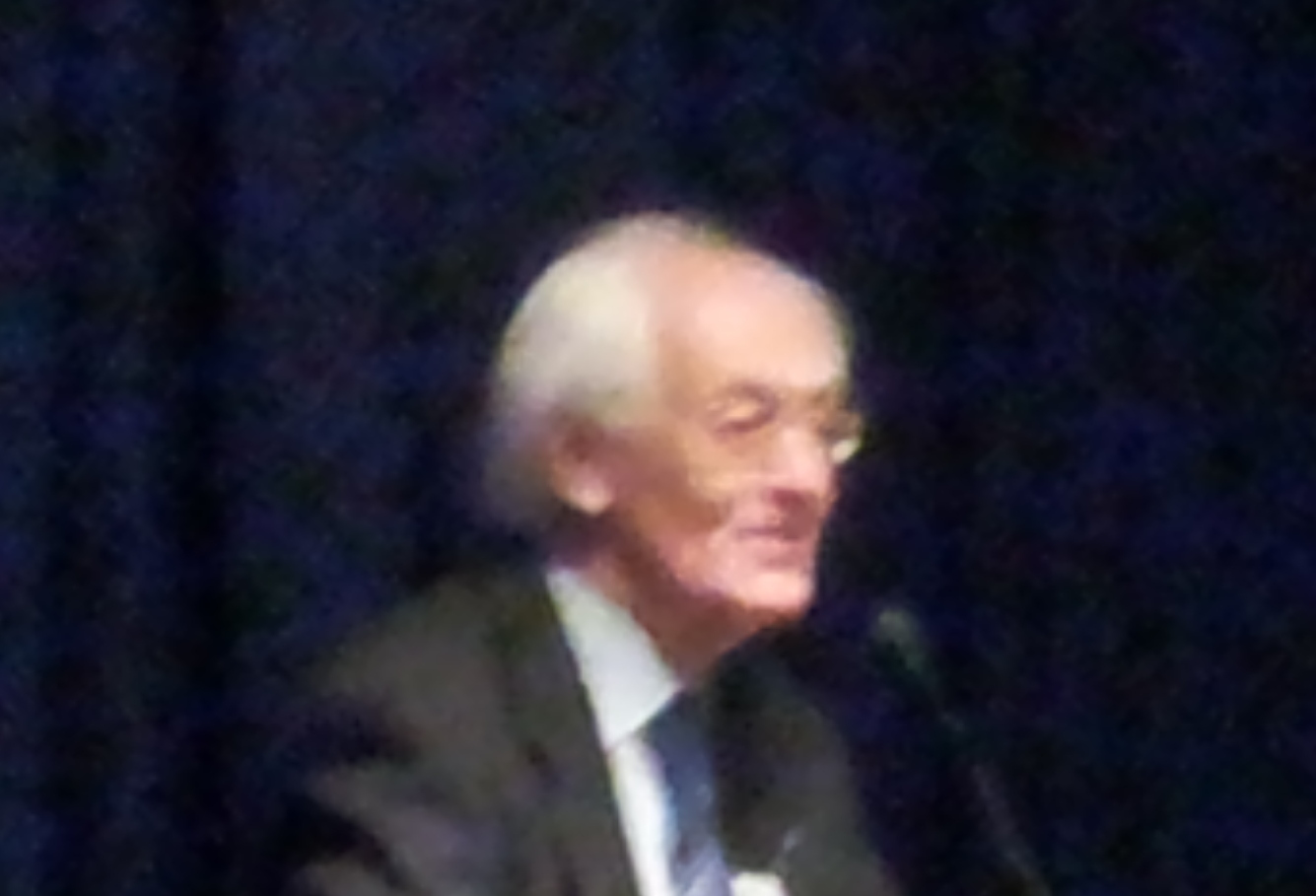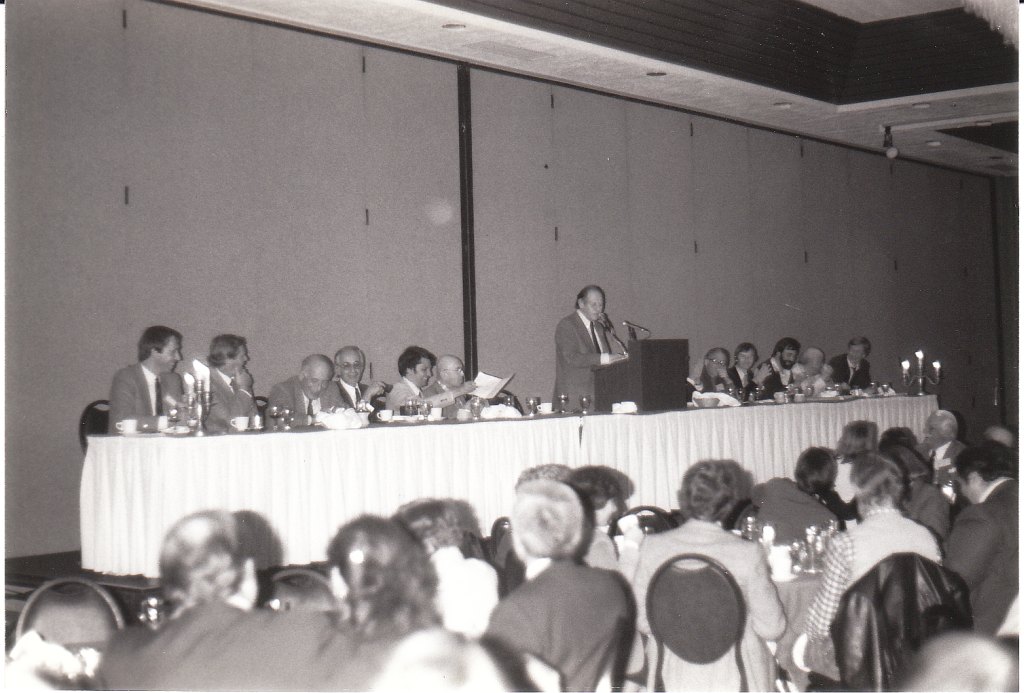|
Rob Nanninga
Roelof Hendrik "Rob" Nanninga (6 August 1955 – 30 May 2014) was a Dutch skeptic, writer, board member of Stichting Skepsis and editor of its magazine ''Skepter''. He became known for his critical writings about sects, alternative healers and therapists, paranormal claims and pseudoscientific trainings and courses. Early career Nanninga completed his Ubbo Emmius teacher education in the summer of 1980 as a high school teacher in Dutch and English. After only a month in military service he was discharged. Nanninga was a teacher for only a short time, being unable to keep order in class; his East Groningen pupils wanted no part of his Skinnerian ideas about rewarding and not punishing. He concluded educating rebellious teenagers was not for him. First skeptical activities In 1976, Nanninga got involved in a skeptics discussion group in Groningen via a school project of the college. He told them he knew how Uri Geller bent spoons. In the same year, the American skeptical ... [...More Info...] [...Related Items...] OR: [Wikipedia] [Google] [Baidu] |
Groningen
Groningen (; gos, Grunn or ) is the capital city and main municipality of Groningen province in the Netherlands. The ''capital of the north'', Groningen is the largest place as well as the economic and cultural centre of the northern part of the country; as of December 2021, it had 235,287 inhabitants, making it the sixth largest city/municipality of the Netherlands and the second largest outside the Randstad. Groningen was established more than 950 years ago and gained city rights in 1245. Due to its relatively isolated location from the then successive Dutch centres of power (Utrecht, The Hague, Brussels), Groningen was historically reliant on itself and nearby regions. As a Hanseatic city, it was part of the North German trade network, but later it mainly became a regional market centre. At the height of its power in the 15th century, Groningen could be considered an independent city-state and it remained autonomous until the French era. Today Groningen is a university ci ... [...More Info...] [...Related Items...] OR: [Wikipedia] [Google] [Baidu] |
Committee For Skeptical Inquiry
The Committee for Skeptical Inquiry (CSI), formerly known as the Committee for the Scientific Investigation of Claims of the Paranormal (CSICOP), is a program within the US non-profit organization Center for Inquiry (CFI), which seeks to "promote scientific inquiry, critical investigation, and the use of reason in examining controversial and extraordinary claims." Paul Kurtz proposed the establishment of CSICOP in 1976 as an independent non-profit organization (before merging with CFI as one of its programs in 2015), to counter what he regarded as an uncritical acceptance of, and support for, paranormal claims by both the media and society in general. Its philosophical position is one of scientific skepticism. CSI's fellows have included notable scientists, Nobel laureates, philosophers, psychologists, educators and authors. It is headquartered in Amherst, New York. History The committee was officially launched on April 30, 1976, and was co-chaired by Paul Kurtz and Marcell ... [...More Info...] [...Related Items...] OR: [Wikipedia] [Google] [Baidu] |
Gestalt Therapy
Gestalt therapy is a form of psychotherapy that emphasizes personal responsibility and focuses on the individual's experience in the present moment, the therapist–client relationship, the environmental and social contexts of a person's life, and the self-regulating adjustments people make as a result of their overall situation. It was developed by Fritz Perls, Laura Perls and Paul Goodman in the 1940s and 1950s, and was first described in the 1951 book ''Gestalt Therapy''. Overview Edwin Nevis, co-founder of the Gestalt Institute of Cleveland, founder of the Gestalt International Study Center, and faculty member at the MIT Sloan School of Management, described Gestalt therapy as "a conceptual and methodological base from which helping professionals can craft their practice". In the same volume, Joel Latner stated that Gestalt therapy is built upon two central ideas: that the most helpful focus of psychotherapy is the experiential present moment, and that everyone is caught in ... [...More Info...] [...Related Items...] OR: [Wikipedia] [Google] [Baidu] |
Cornelis De Jager
Cornelis "Kees" de Jager (; 29 April 1921 – 27 May 2021) was a Dutch astronomer who specialized in predicting solar variation to assess the Sun's impact on future climate. He was the General Secretary of the IAU from 1967 to 1973 and former director of the observatory at Utrecht. He was a fellow with the Committee for Skeptical Inquiry and played an important role in the European skeptical movement as the first chairman of both Stichting Skepsis and the European Council of Skeptical Organisations. Personal life and education Born in Den Burg on the Dutch island of Texel, de Jager spent his school years in the Dutch East Indies. In 1939, De Jager heard Professor Minnaert speak. De Jager said "I was so fascinated by what he said, that I decided right then and there to study Astronomy." From 1939 to 1945, he studied mathematics, physics and astronomy at Utrecht University. On 13 October 1952, he obtained his PhD with a thesis called "The Hydrogen Spectrum of the Sun". His supe ... [...More Info...] [...Related Items...] OR: [Wikipedia] [Google] [Baidu] |
Astronomer
An astronomer is a scientist in the field of astronomy who focuses their studies on a specific question or field outside the scope of Earth. They observe astronomical objects such as stars, planets, natural satellite, moons, comets and galaxy, galaxies – in either observational astronomy, observational (by analyzing the data) or theoretical astronomy. Examples of topics or fields astronomers study include planetary science, Sun, solar astronomy, the Star formation, origin or stellar evolution, evolution of stars, or the galaxy formation and evolution, formation of galaxies. A related but distinct subject is physical cosmology, which studies the Universe as a whole. Types Astronomers usually fall under either of two main types: observational astronomy, observational and theoretical astronomy, theoretical. Observational astronomers make direct observations of Astronomical object, celestial objects and analyze the data. In contrast, theoretical astronomers create and investigate C ... [...More Info...] [...Related Items...] OR: [Wikipedia] [Google] [Baidu] |
Jan Willem Nienhuys
Jan Willem Nienhuys (born 16 April 1942) is a Dutch mathematician, book translator and skeptic. He taught mathematics at the Eindhoven University of Technology. He is also a board member and secretary of Stichting Skepsis and an editor of its magazine '' Skepter''. Biography Nienhuys studied mathematics in the Netherlands, and in 1966/67 at Tulane University in New Orleans, where he met his future wife. On 14 September 1970, he earned his doctorate in mathematics at Utrecht University under guidance of his promotor Hans Freudenthal. His dissertation was published the same year in the journal ''Indagationes Mathematicae (Proceedings)''. Next, he was mathematics teacher for two years at the National Taiwan University in Taipei, Taiwan. Since 1973, he taught mathematics at the Eindhoven University of Technology. Furthermore, Nienhuys assisted several writers in completing their books, and translated books to Dutch. Nienhuys married Cheng Shan-Hwei and they have two sons. She was ... [...More Info...] [...Related Items...] OR: [Wikipedia] [Google] [Baidu] |
Paul Kurtz
Paul Kurtz (December 21, 1925 – October 20, 2012) was an American scientific skeptic and Secular humanism, secular humanist. He has been called "the father of secular humanism". He was Professor Emeritus of Philosophy at the University at Buffalo, The State University of New York, State University of New York at Buffalo, having previously also taught at Vassar, Trinity, and Union colleges, and the New School for Social Research. Kurtz founded the publishing house Prometheus Books in 1969. He was also the founder and past chairman of the Committee for Skeptical Inquiry (CSI, formerly the ''Committee for the Scientific Investigation of Claims of the Paranormal'', CSICOP), the Council for Secular Humanism, and the Center for Inquiry. He was editor in chief of ''Free Inquiry'' magazine, a publication of the Council for Secular Humanism. He was co-chair of the International Humanist and Ethical Union (IHEU) from 1986 to 1994. He was a Fellow of the American Association for the Adva ... [...More Info...] [...Related Items...] OR: [Wikipedia] [Google] [Baidu] |
Utrecht
Utrecht ( , , ) is the List of cities in the Netherlands by province, fourth-largest city and a List of municipalities of the Netherlands, municipality of the Netherlands, capital and most populous city of the Provinces of the Netherlands, province of Utrecht (province), Utrecht. It is located in the eastern corner of the Randstad conurbation, in the very centre of mainland Netherlands, about 35 km south east of the capital Amsterdam and 45 km north east of Rotterdam. It has a population of 361,966 as of 1 December 2021. Utrecht's ancient city centre features many buildings and structures, several dating as far back as the High Middle Ages. It has been the religious centre of the Netherlands since the 8th century. It was the most important city in the Netherlands until the Dutch Golden Age, when it was surpassed by Amsterdam as the country's cultural centre and most populous city. Utrecht is home to Utrecht University, the largest university in the Netherlands, as well as seve ... [...More Info...] [...Related Items...] OR: [Wikipedia] [Google] [Baidu] |
Het Spectrum
Uitgeverij Lannoo Groep is a Belgian publishing group, based in Tielt, with assets in Belgium and the Netherlands. Its Belgian subsidiary is Uitgeverij Lannoo. Its Dutch subsidiary is LannooMeulenhoff. Over the years Lannoo evolved from Catholic and Flemish to an open, commercial publishing house. Uitgeverij Lannoo The publishing and printing company Lannoo was founded in 1909 by Joris Lannoo (1891–1971). Joris Lannoo was a member of the Flemish Movement. The original company logo, featuring a sailing Viking neck, was designed by Joe English and modernized over the years. After Joris Lannoo, Jan and Godfried Lannoo took over the management of the company. In 1991 the publisher company spun off Lannoo Printers (the printing company went bankrupt in 2018). The French-language ''Editions Racine'' was founded in 1993. In 1994 Godfried Lannoo resigned as general manager to be replaced by his son Matthias Lannoo. In 1999 Lannoo acquired the Dutch publishing house ''Terra Zutphen'' ... [...More Info...] [...Related Items...] OR: [Wikipedia] [Google] [Baidu] |
Mattress
A mattress is a large, usually rectangular pad for supporting a lying person. It is designed to be used as a bed, or on a bed frame as part of a bed. Mattresses may consist of a quilted or similarly fastened case, usually of heavy cloth, containing materials such as hair, straw, cotton, foam rubber, or a framework of metal springs. Mattresses may also be filled with air or water. Mattresses are usually placed on top of a bed base which may be solid, as in the case of a platform bed, or elastic, such as an upholstered wood and wire box spring or a slatted foundation. Popular in Europe, a divan incorporates both mattress and foundation in a single upholstered, footed unit. Divans have at least one innerspring layer as well as cushioning materials. They may be supplied with a secondary mattress or a removable "topper". Mattresses may also be filled with air or water, or a variety of natural fibers, such as in futons. Kapok is a common mattress material in Southeast Asia, and coi ... [...More Info...] [...Related Items...] OR: [Wikipedia] [Google] [Baidu] |
Marble (toy)
A marble is a small spherical object often made from glass, clay, steel, plastic, or agate. They vary in size, and most commonly are about in diameter. These toys can be used for a variety of games called ''marbles'', as well being placed in marble runs or races, or created as a form of art. They are often collected, both for nostalgia and for their aesthetic colors. Sizes may range from less than to over , while some art glass marbles for display purposes are over wide. In the North of England the objects and the game are called "taws", with larger taws being called "bottle washers" after the use of a marble in Codd-neck bottles, which were often collected for play. Games History In the early twentieth century, small balls of stone from about 2500 BCE, identified by archaeologists as marbles, were found by excavation near Mohenjo-daro, in a site associated with the Indus Valley civilization. Marbles are often mentioned in Roman literature, as in Ovid's poem "Nux" (which ... [...More Info...] [...Related Items...] OR: [Wikipedia] [Google] [Baidu] |






.jpg)
